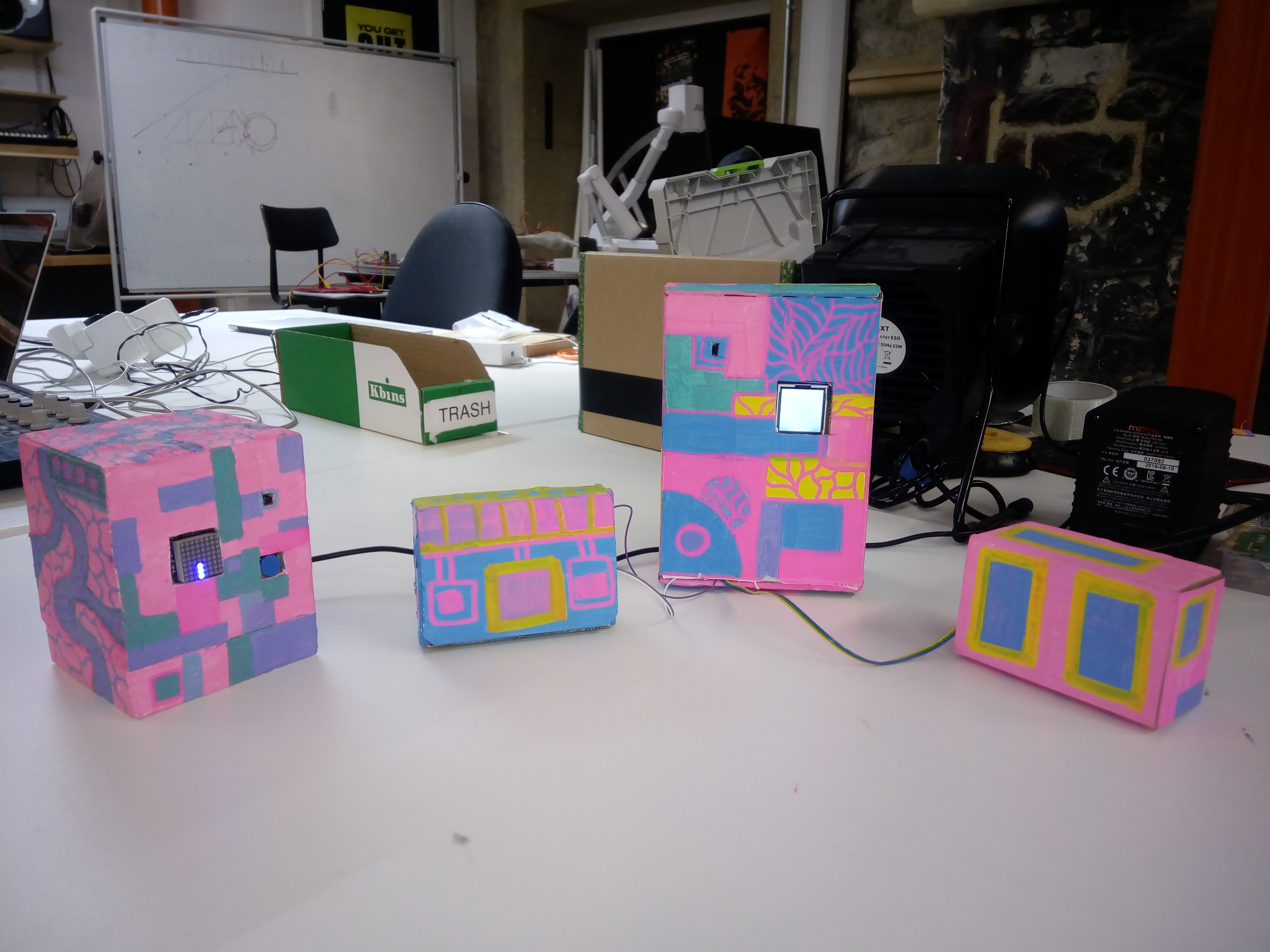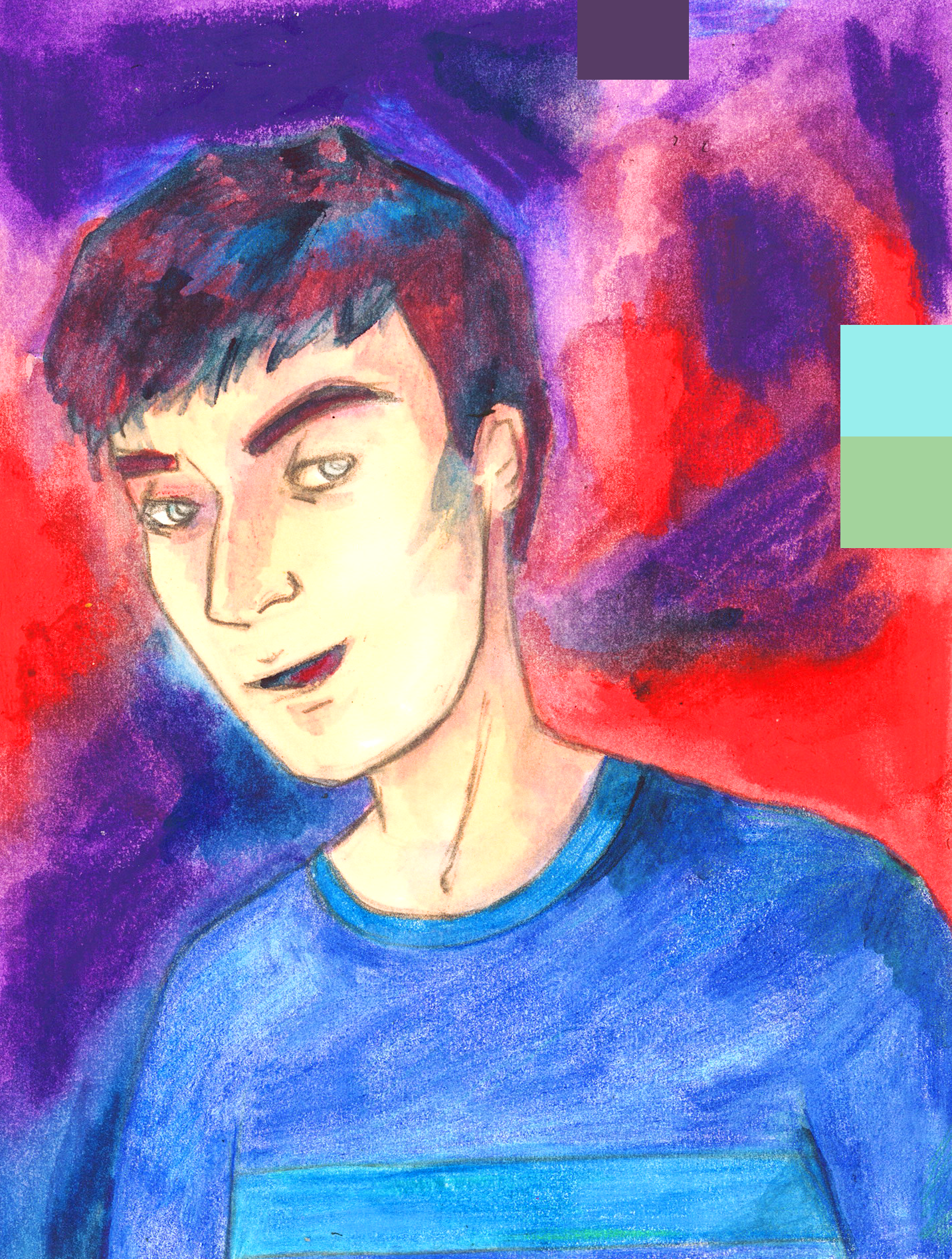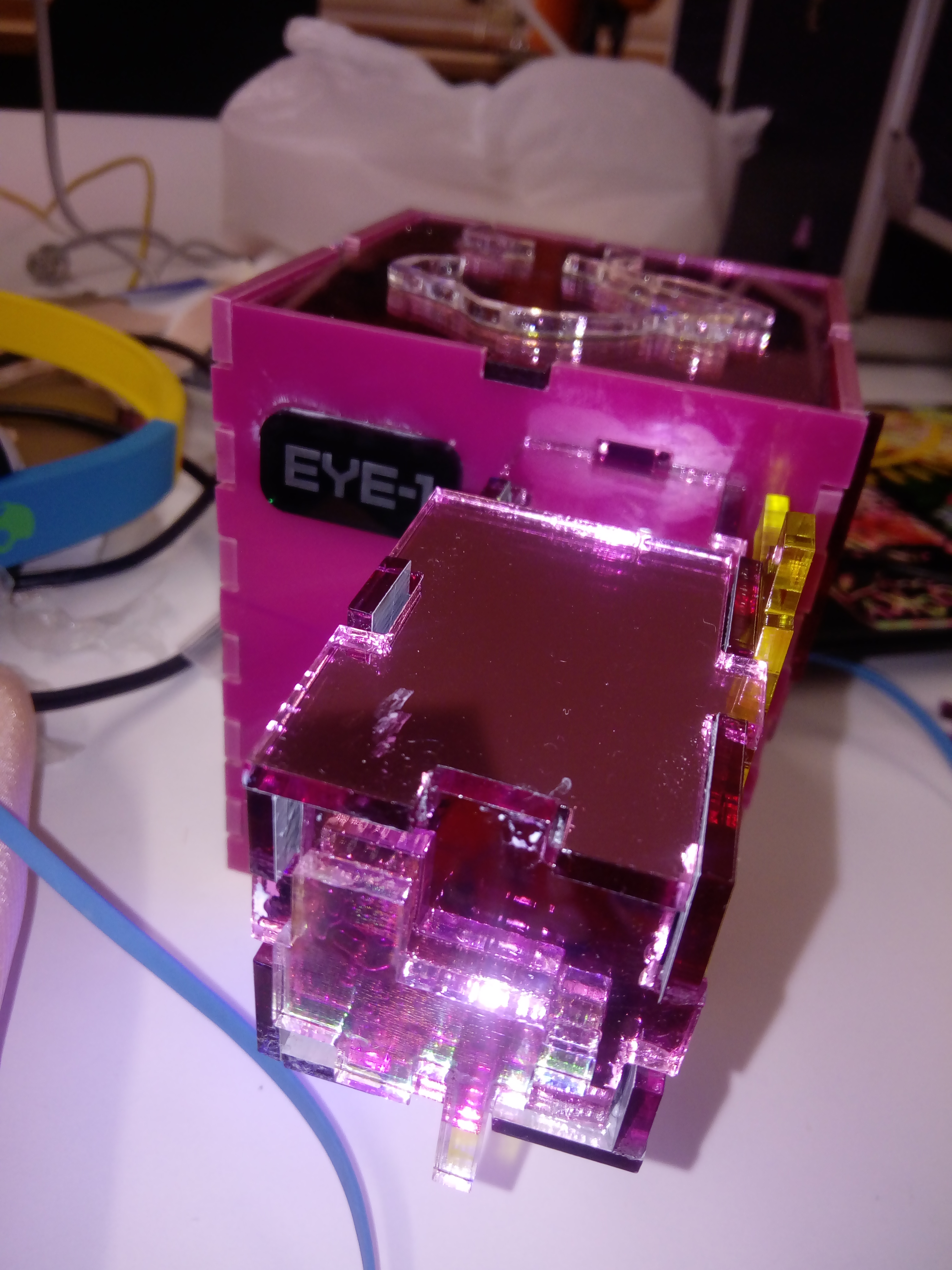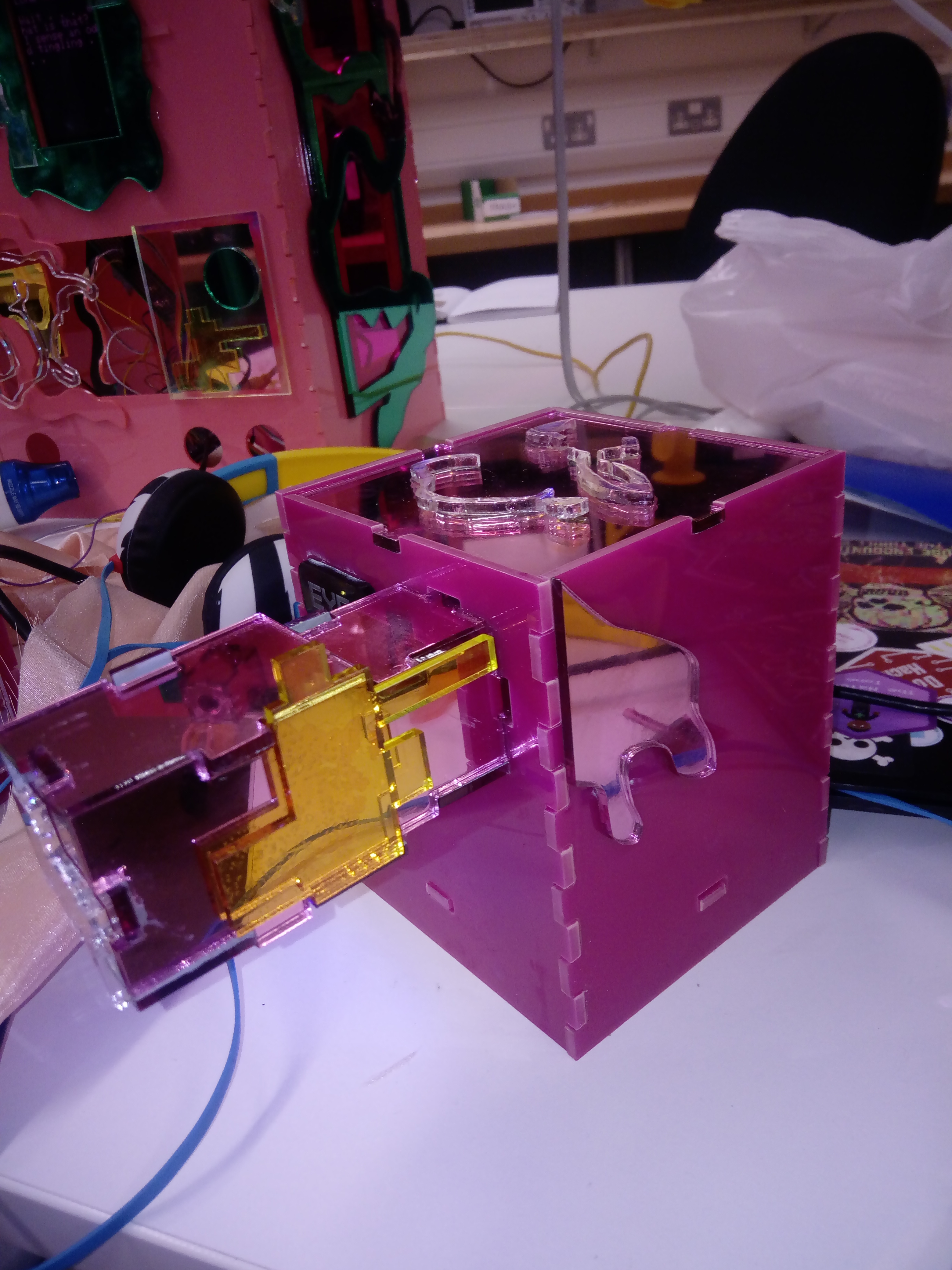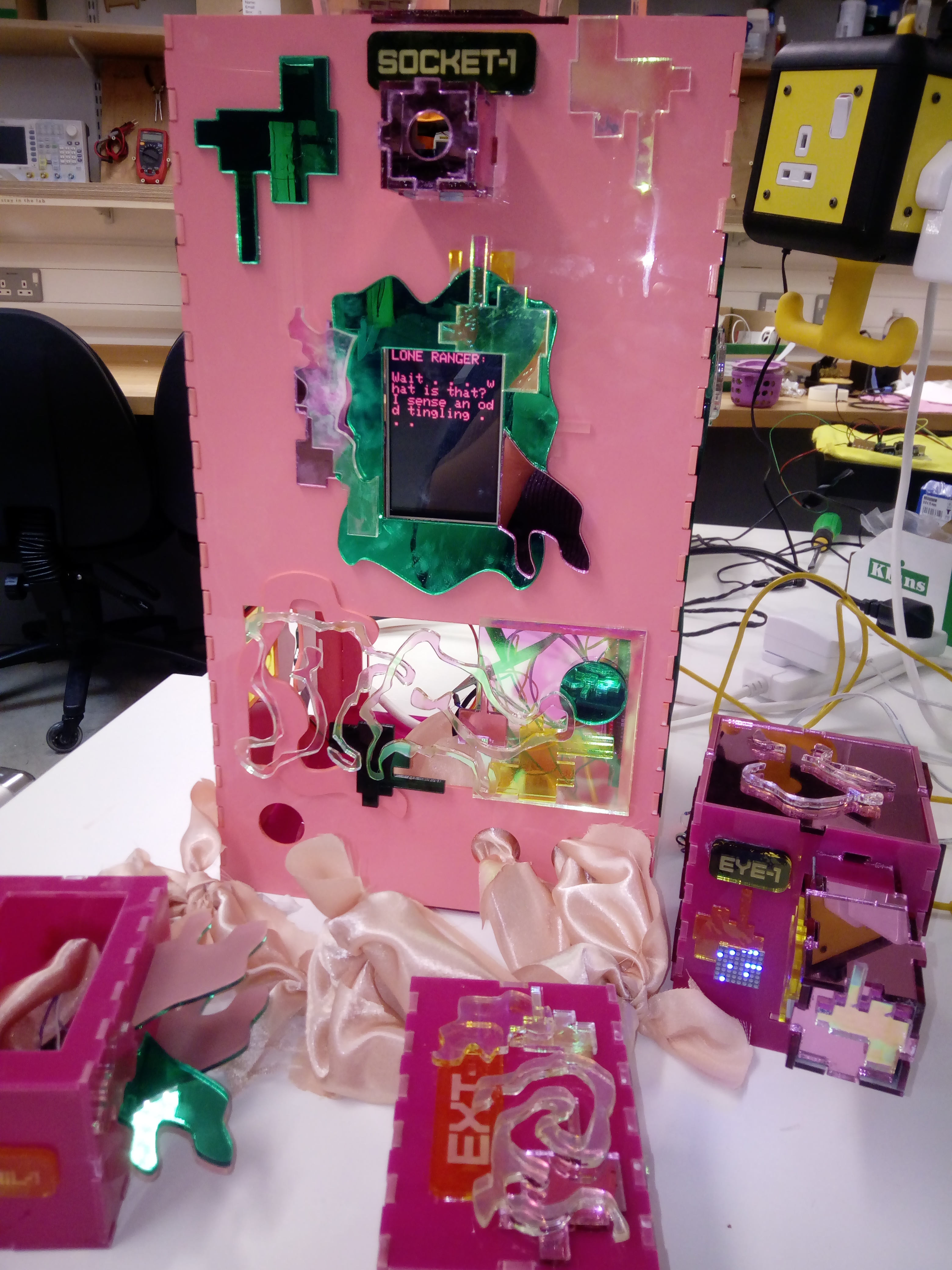Void of Memory
Void of Memory is a narrative-based game that takes in the near future where all information is collected and analyzed at a molecular level and stored in large servers that consist of organic matter and that grow and take shape according to the data that they store. The player takes on the role of Marlena, the protagonist whose job it is to clean and maintain these machines. This position allows her to access all of the information stored in these servers. The player interacts with one of these machines and determines what to do with the information that it stores.
produced by: Julia Makivic
Introduction
This is a short paragraph I wrote at the start of the summer term to describe the world in which Void of Memory takes place:
There is a large, glass building in the outskirts of a former ghost-town in the southwestern United States. Although the windows are clear and transparent it is hard for outsiders to see what is inside the building because no one, other than a few authorized individuals, is allowed to enter within ten miles of it. The building is a farm for organic servers that grow and mould according to the data that they store and collect. The servers are connected to one another with an intricate system of roots that reach up to fifty feet underground. They have long tendrils that continue to pulse and grow as the servers collect more data. The servers release spores into the air that travel for hundreds of miles and collect data at a molecular level. Microscopic retinas embedded in trees and buildings send visual data back to the server farm. These server farms store information on every individual in the world. Not only can they provide information on where an individual was at any given time and what they were doing, they can also provide information about the quality of the air, and whether the person in question was feeling scared, sad or elated. More importantly, the servers analyze the data to predict the innermost feelings, intentions and desires of any individual on earth.
Concept and background research
I have been developing the concept behind this story for a few years, in the form of various iterations including interactive web texts, illustrations and comics. At first I was inspired by the vast amount of personal data collected by social media platforms. By looking through a person’s posts or timeline, one can construe an idea of who that person is and how they’ve grown over time without ever having known them. I was intrigued by the voyeuristic tendencies these media inspired in their users. Although these platforms contain a wealth of data on their users, the interpretation of that data is still skewed by the person or system interpreting it and their/its desires and passed experiences. I was inspired to create a story where one person traverses through a breadth of private, personal data of various individuals in order to find a sense of closure.
My background in comics and illustration greatly influenced the development of this project. I was inspired by the science fiction worlds of seventies and eighties Heavy Metal magazine and the art of Moebius. I wanted to create a narrative that occurred in a similar fantastical, colorful science fiction world.
Eventually, I created a world where data collection is ubiquitous - the data of every person is collected at a molecular level. Servers made out of organic materials grow and take shape according to the data that they collect. They release microscopic spores into the air that record not only audio and visual data but also record various changes in the environment and physical changes within the person they are observing. These servers do not only store information such as where a person was on a given day, but by amalgamating these various data points, they also know why the person was there and what they were planning to do next.
I wanted to write a story from the perspective of a character who had access to all of this information and who could use it to find out whatever they wanted about anyone in the world. In this case, the protagonist Marlena, is a recent college graduate who is stuck at a dead end job maintaining one of these servers. However, she eventually finds out that she is able to gain access to all of the information that it stores. She can either choose to follow the rules and use the server for strictly work related purposes or she can use it to spy on whoever she pleases. It is up to the player to decide which path she chooses to take.
Technical
This game was made using an arduino mega, an arduino pro mini, a small 8x8 led matrix, an infrared led, an infrared receiver, two tilt switches, a 3.5inch TFT LCD screen and a large piezo. The game consists of four individual components, the server itself, EYE-1, EXT-1 and TENDRIL-1. The server is the large, pink piece with the screen. The area at the top, labeled SOCKET-1 contains an infrared receiver. It is powered by the arduino mega. The case also holds a piezo which makes noises that are triggered by an action. EXT-1 and TENDRIL-1 are both connected to the main server and each holds a tilt switch. EYE-1 contains the infrared led transmitter and has a small matrix that shows random patterns for an aesthetic effect. It is powered by an arduino pro mini. All of the cases for these components are made out of laser-cut acrylic.
The main server component uses a TFT LCD screen with a well developed graphics library. I liked the retro aesthetic of the graphics available and used them as a means of adding a slight familiarity to this esoteric device. I also drew my own bitmaps and showed them on the screen, as well. These bitmaps are meant to add information about characters and the surrounding environment.
EYE-1 is used to send messages to SOCKET-1 over infrared. It sends the character ‘y’. When SOCKET-1 receives ‘y’, it triggers a change in the story. Throughout the process of making this project, I realized that infrared communication could at times be unreliable. However, I wanted to stick with it because I liked how the medium of infrared provided a parallel to how data was collected in the game. I thought it was magical how waves of light could be used to send text using very simple materials. Although it was frustrating at times, I liked how the messages could be affected by unknown factors in the environment. It made it seem like more of an organic, living medium, like the machines in the story. Therefore, I designed the interaction and the timing of the game to accommodate these factors.
If there was interference with the infrared signal and the message is muddled, after a few scrambled messages are received, the screen will acknowledge that the message was muddled but the story will proceed as if ‘y’ was sent. After many days spent testing and working around the fickleness and unpredictability of infrared communication, I found that this was the best compromise. A muddled signal was often sent if users were trying to connect EYE-1 to SOCKET-1 but something else was interfering with the signal.
In order for this project to be successful, I needed to do extensive user testing. Because it is a game with non-traditional controls, I had to make the interface as understandable as possible. I included directions on the screen - i.e. “Flip Tendril-1 to spy on individual X”. I also had people come and test the game throughout its development. I found that one of the major challenges was creating an interface that allowed for exploration while still providing enough guidance that would let users know which controls did what.
I started prototyping very early on in the summer because I wanted to solidify the basic game mechanics and have ample time to test them. I built quick prototypes using cardboard that contained all of the basic components, including the main server with the screen, the box with the led matrix and infrared transmitter and two small boxes for the tilt switches. After multiple rounds of testing, I decided that the infrared communication would be used only to send and receive messages as a part of the game narrative, while the two tilt switches would be used to make binary decisions in the story.
Below are images of various components from the game, images that appeared on the screen through various points in the story, and also a very early cardboard prototype.
Future development
This is a project that I would like to continue to develop through further iterations. The concept of having a protagonist who is seemingly powerless - a cog in a dead end job, but with access to information on any individual in the world is very interesting to me. Although I created a narrative with four different possible endings, I was only able to include a fraction of the story that I wanted to include. I believe that I have mostly smoothed out the technical components and the mechanics in this iteration, therefore, for the next iteration I would like to develop a much more nuanced story with many more possible paths. I would also like to expand on the capabilities of the infrared communication even further. As I mentioned in the technical section, I only sent the character ‘y’ to the IR receiver. For the next development, I would like to be able to send different messages representing the voices of different characters. In the long run, I see myself building an entire server room with many of these machines communicating with one another and multiple users interacting with them at the same time. I look forward to delevoping this project further next year.
Self evaluation
A great portion of my time was consumed with figuring out technical details and with smoothing out the mechanics, leaving the story until the very end. As a result, I did not include as much of the story as I would have liked, and as a result the narrative experience did not have as much richness as I had desired. However, during testing and during the show, many participants told me that they found themselves immersed in the story and were really compelled by the visual quality of the piece. However, at times, I found users spending more time than desired figuring out how to use the individual components and also trying to determine what the specific role of each piece was. In the next iteration, I would like to highlight the individual purpose of each component and the role it plays within the narrative. Overall, I am very pleased with how the piece turned out and believe it is a very strong start to a narrative experience that I would like to continue developing over many more iterations .
References
Arduino Tamagotchi Clone - Digital Pet
https://www.instructables.com/id/Arduino-Tamagotchi-Clone-Digital-Pet/
IR Communication Using Arduino Uno
http://www.electronicwings.com/arduino/ir-communication-using-arduino-uno
Artistic inspiration: Moebius, Jim Woodring, Simon Stålenhag, Richard Corben, Yudoridori (@yudoridori on instagram), Mcbess
































































